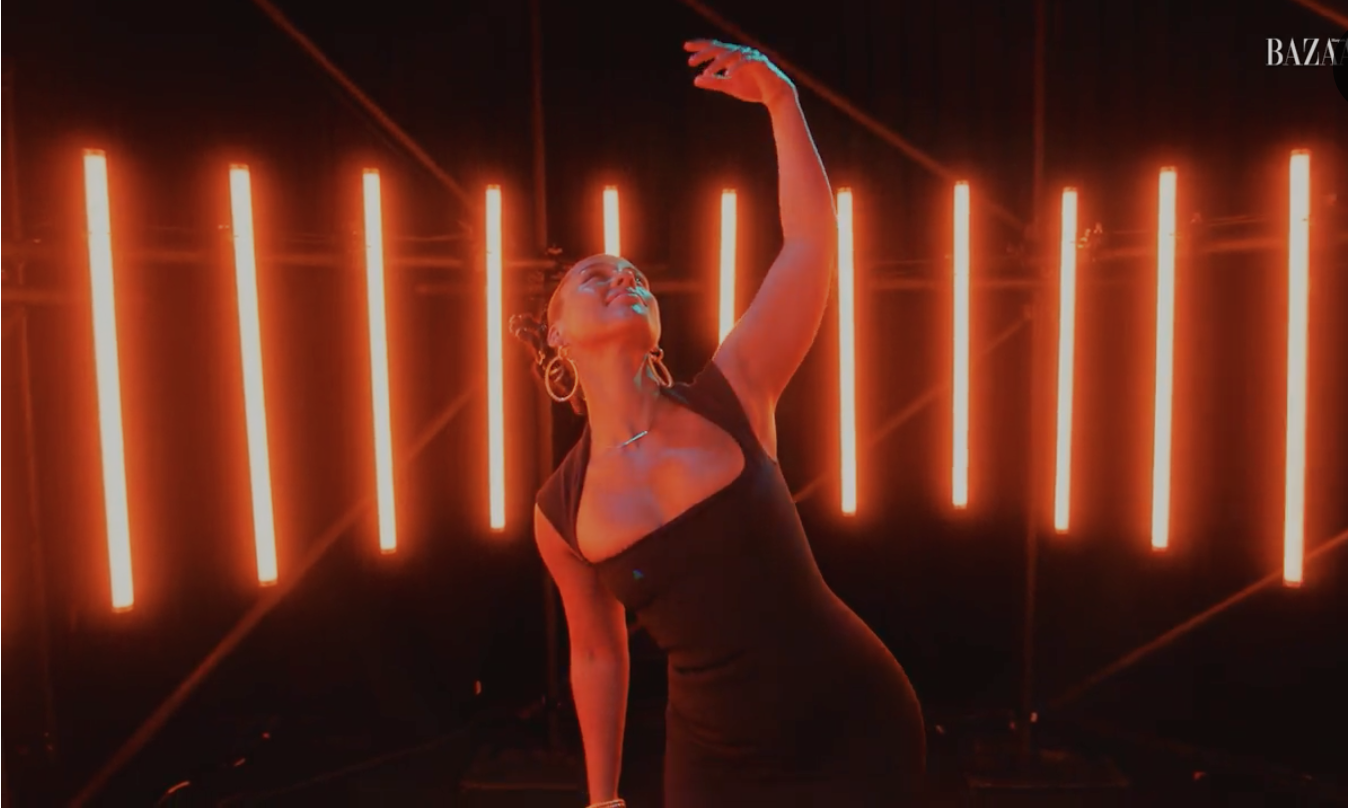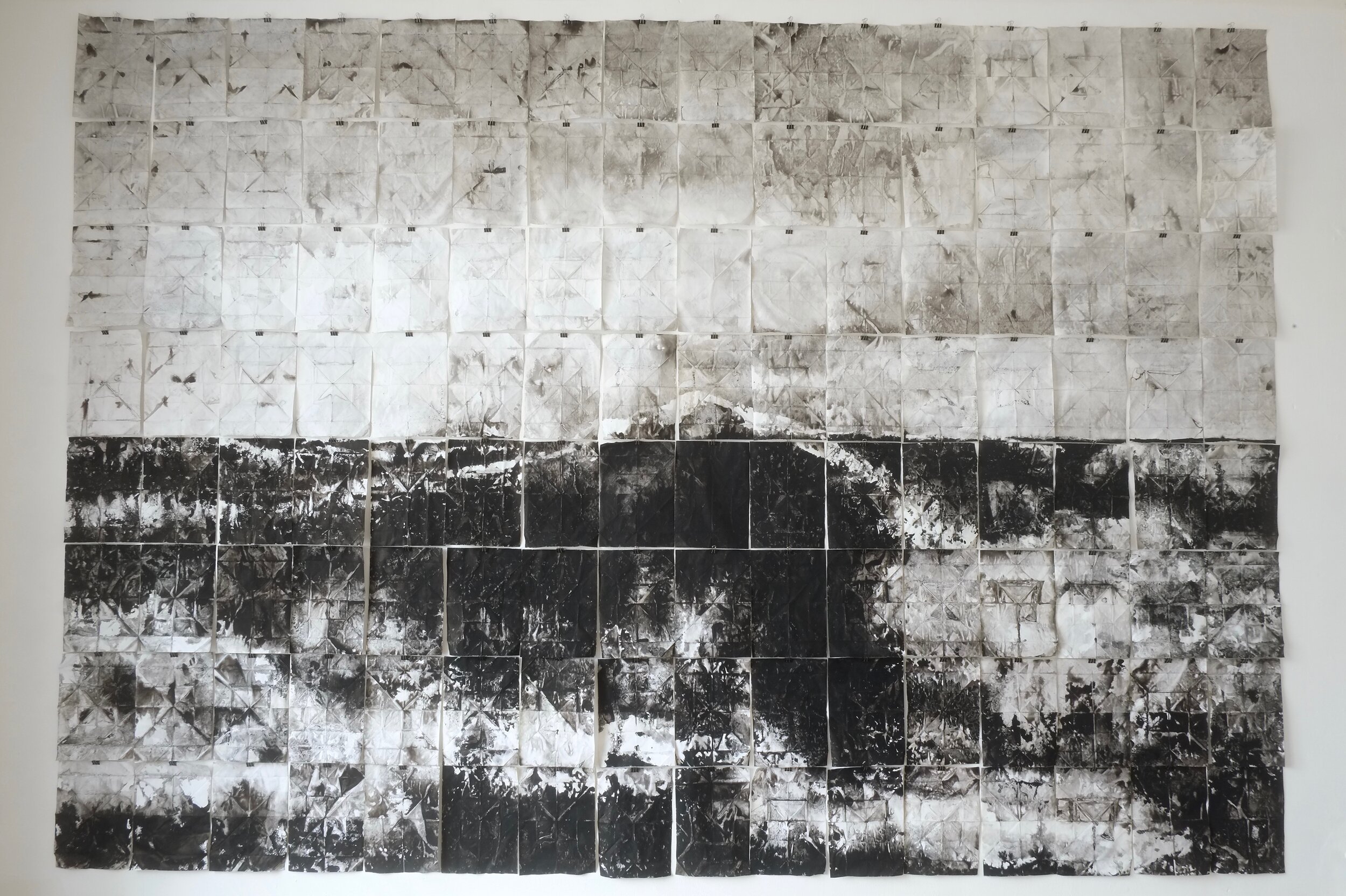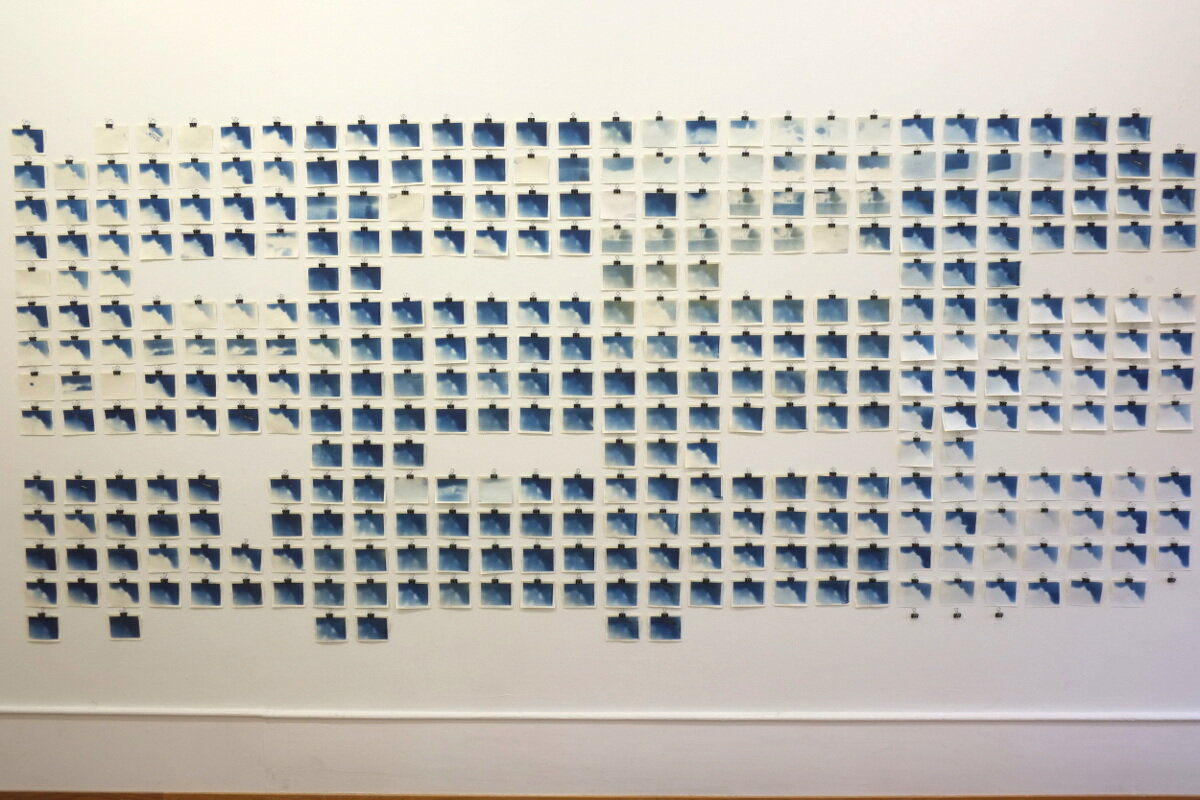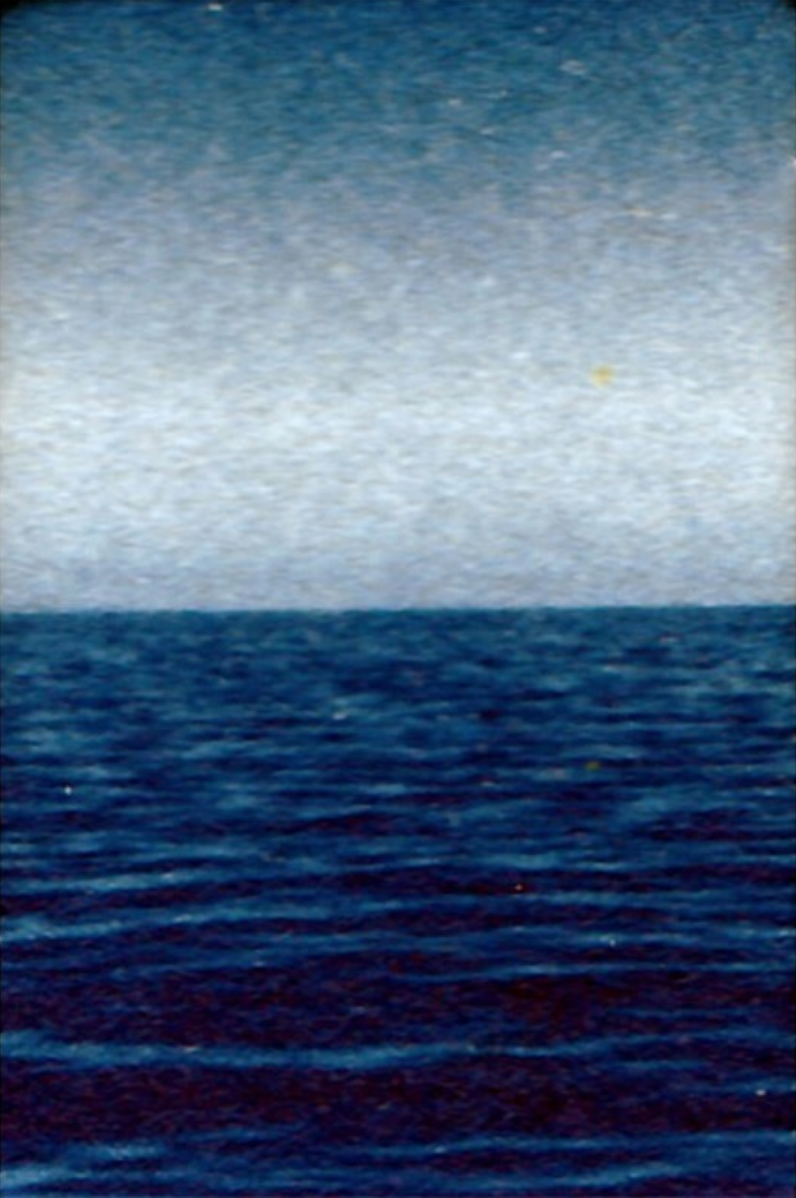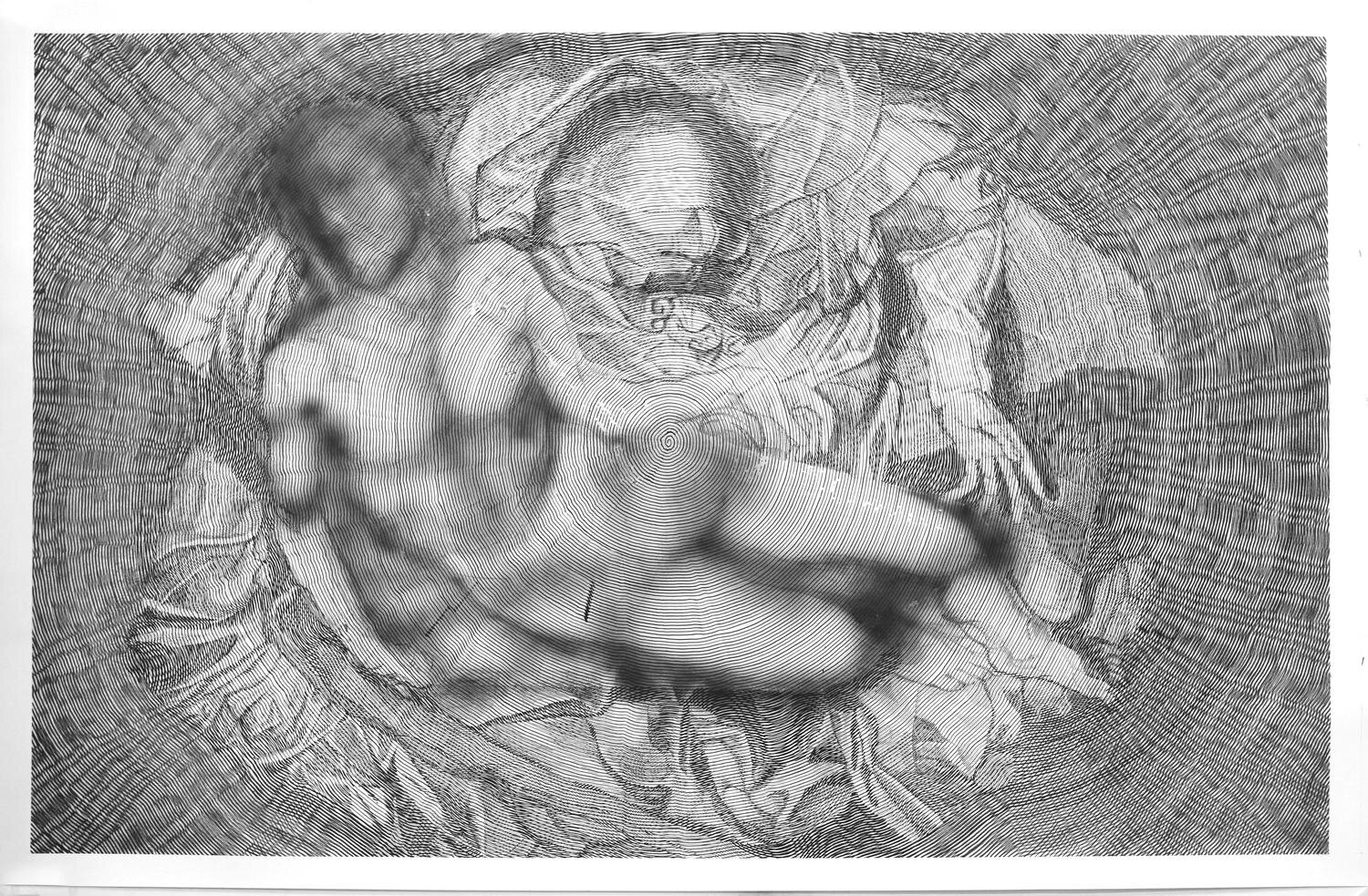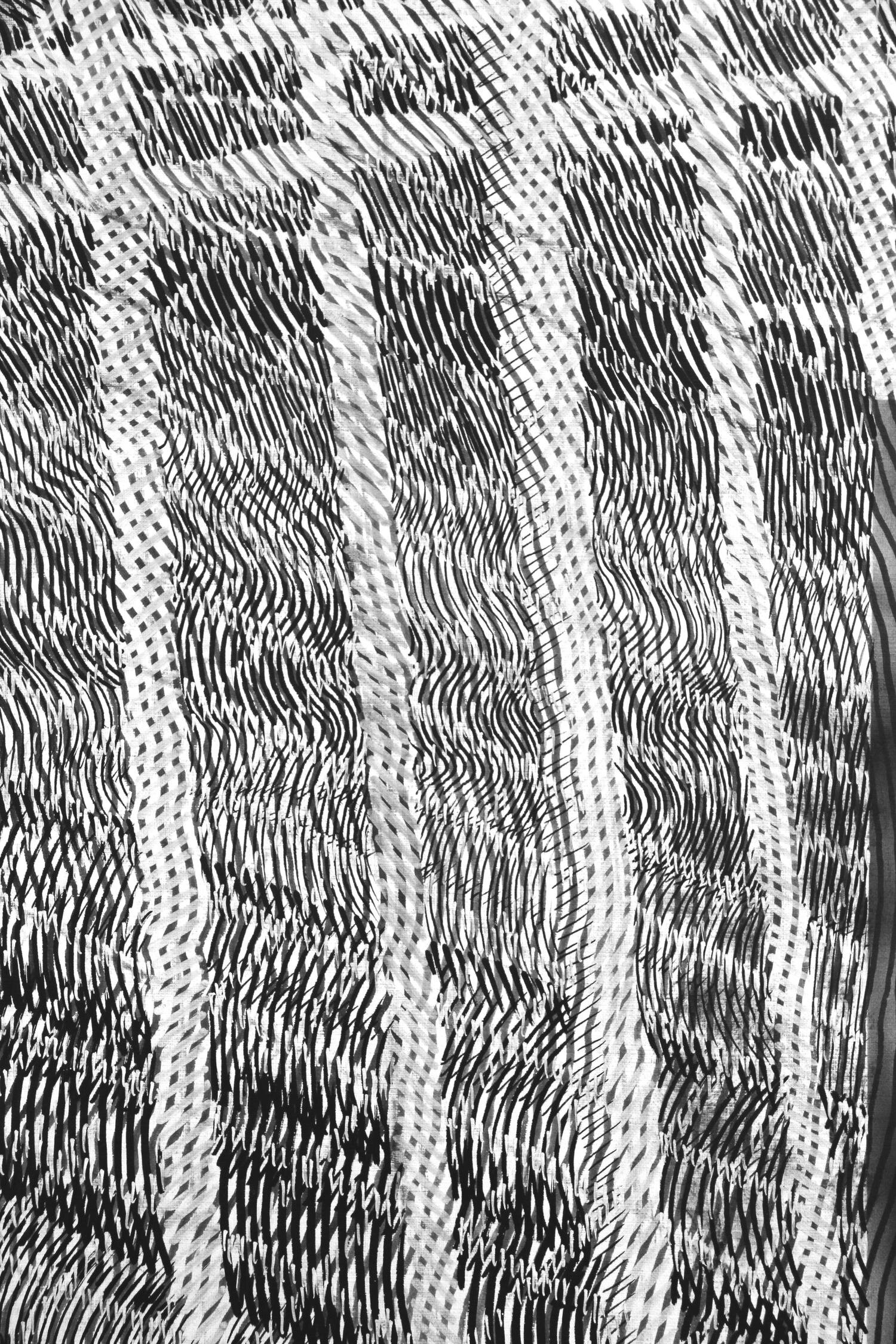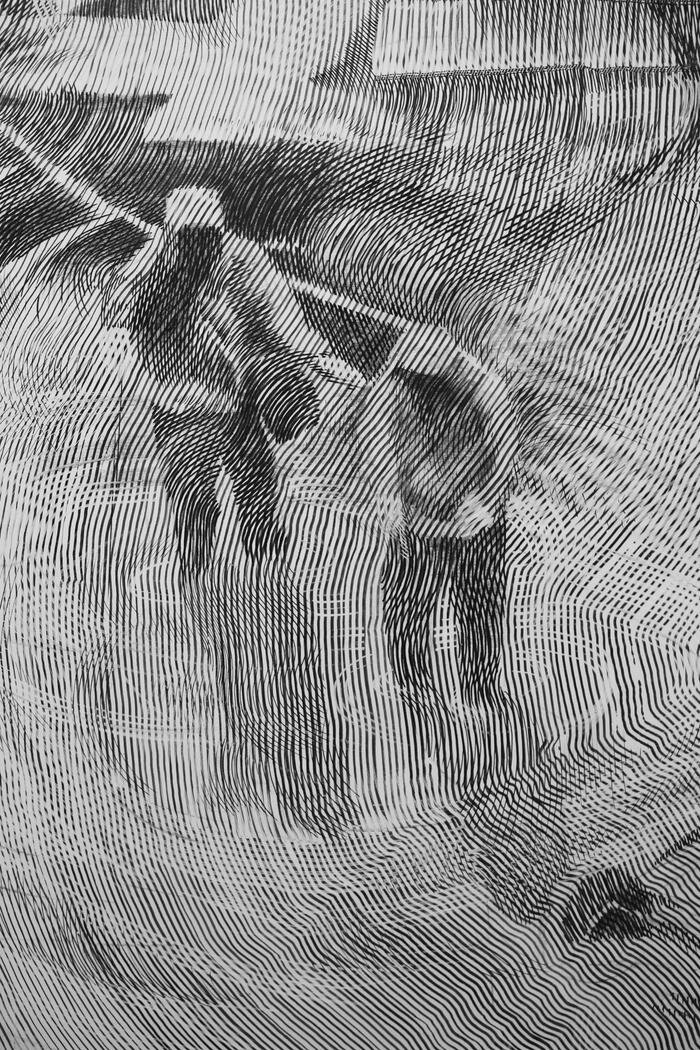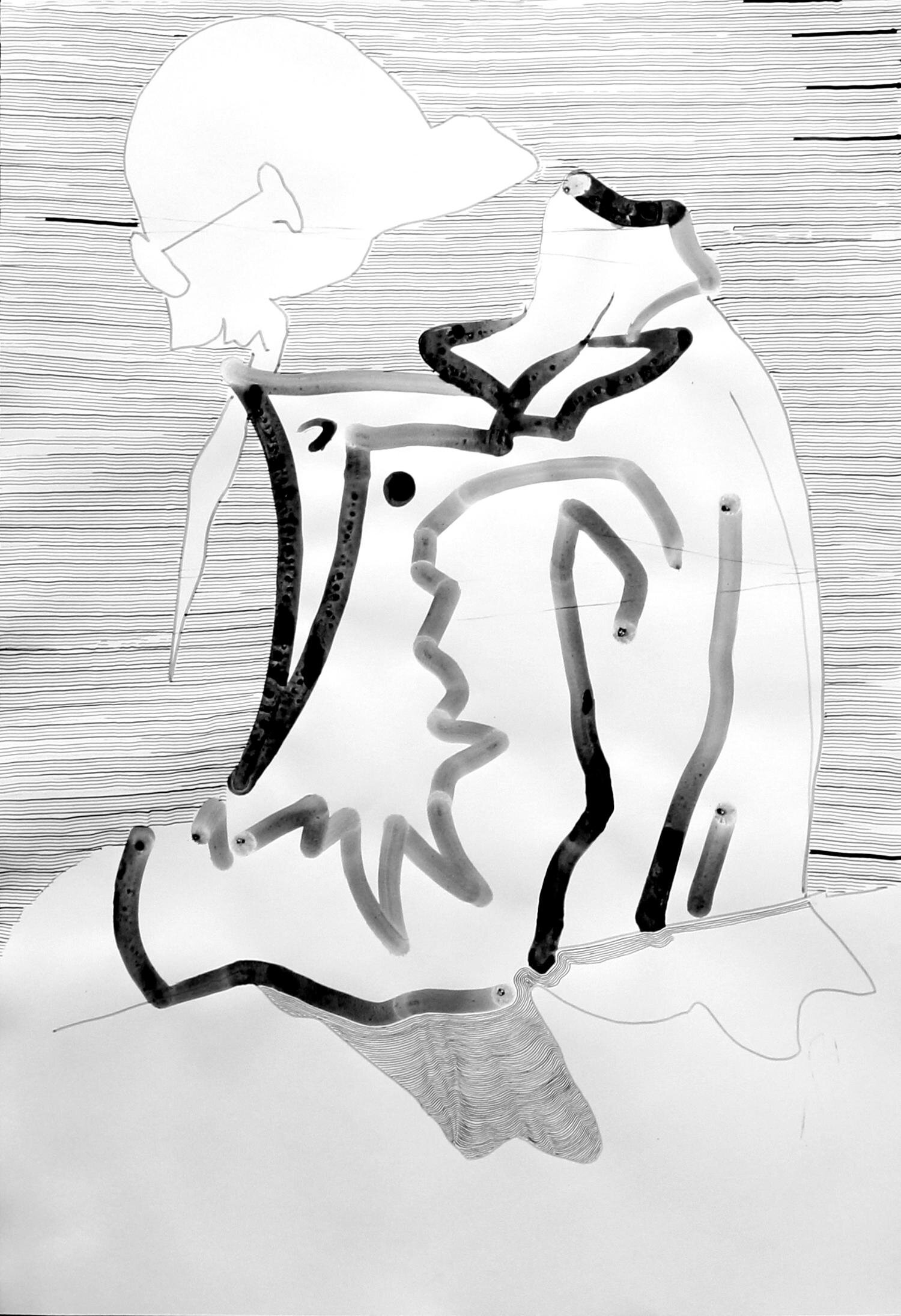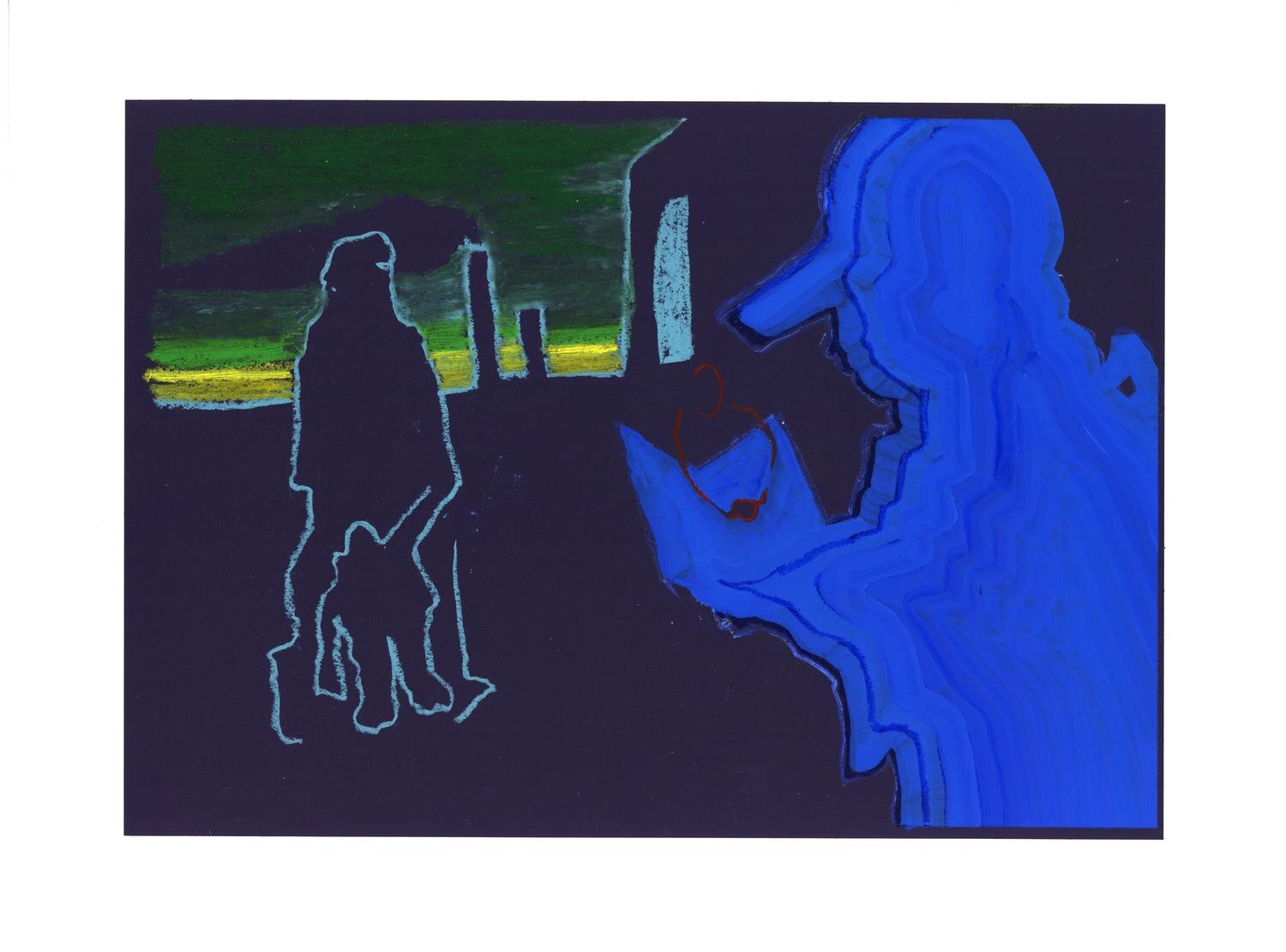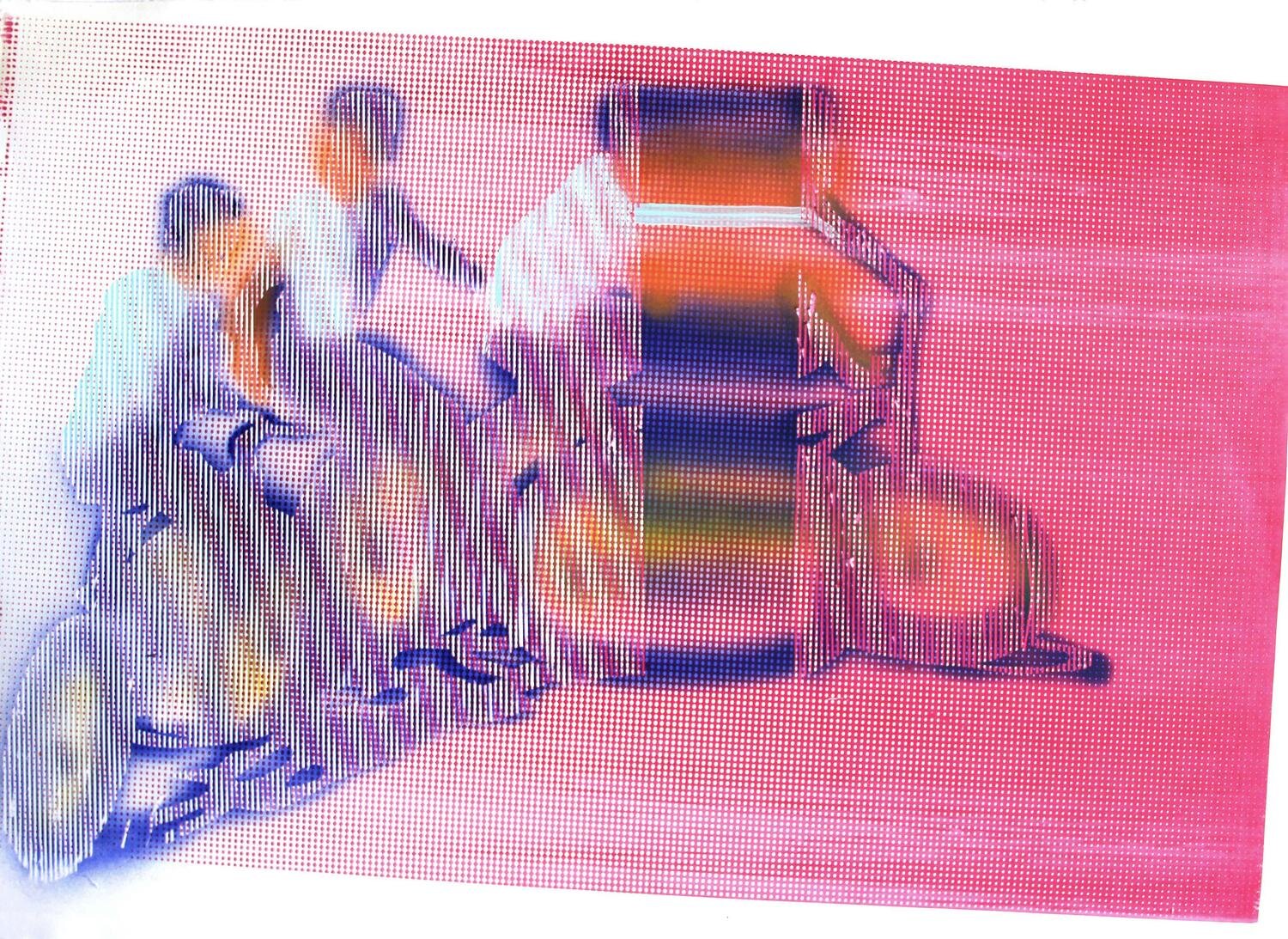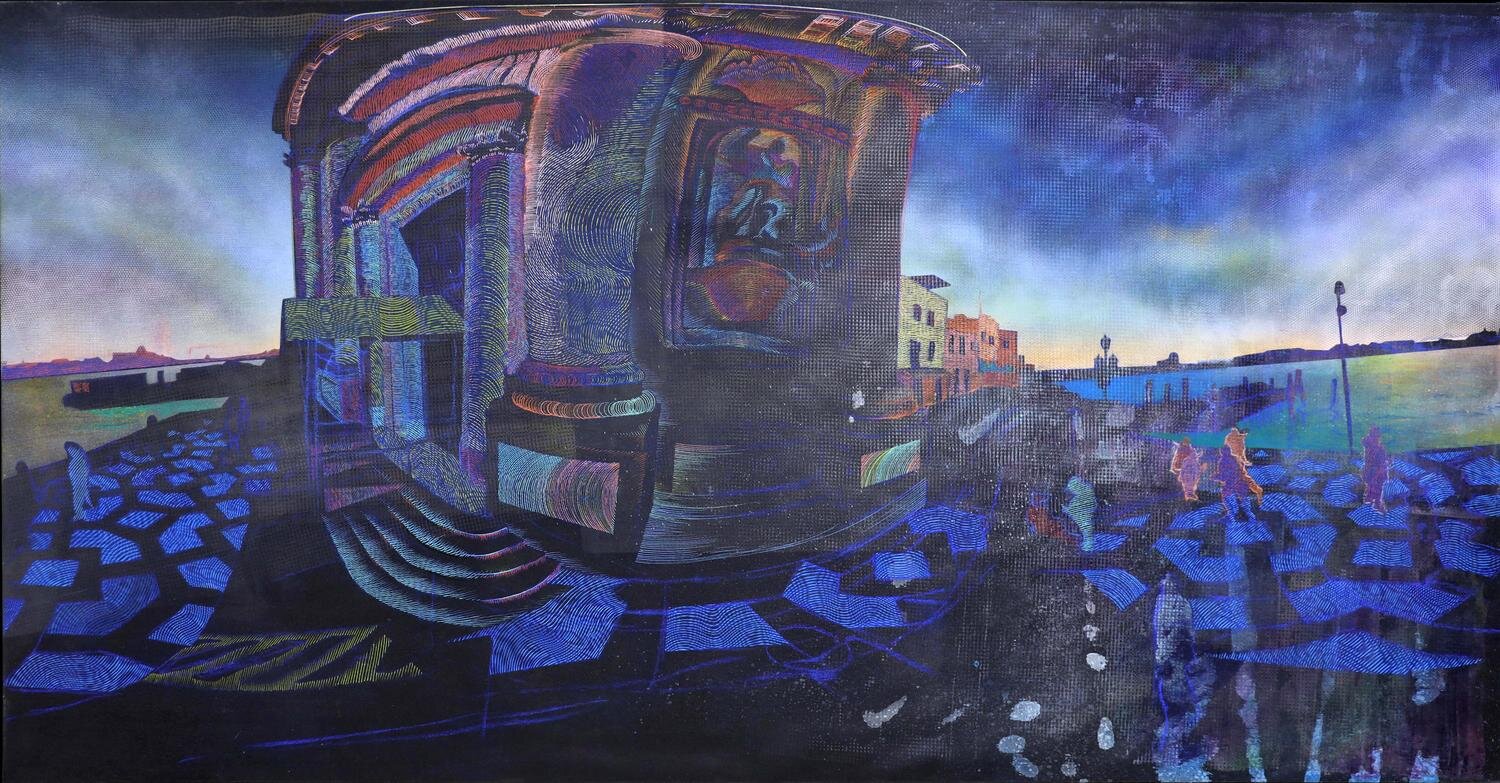Born in Dijon, he works at Maison-Alfort. Starting from the observation of a reversal of the perception of the world which is constantly observed and watched over, the artist quips by watching himself. Victim, suspect or director, he puts himself at the heart of ambiguous situations. It parasitizes the video surveillance system by viewing it as a narrative point of view; fiction plays with reality. The artist freezes, deconstructs and reveals his videos, through drawing and print, which he sees as a filter, reproducing the deformations inherent in the recording of a screen by a lens. Through a game of scale, the images obtained are both figurative and fixed from afar, and abstract and kinetic from close up. Like stopping the video image and moving the still image. These psychedelic freeze frames take us on a journey through the history of art by going back and forth between present and past where video and etching engrave take turns in an anachronistic relationship. This work echoes a work of shots and various experiments carried out in the district of square Clara Zetkin in the 13th arrondissement in Paris with the association Art Exprim in 2017.
Né à Dijon, travaille à Maison-Alfort. Partant du constat d’un retournement de la perception du monde qui s’observe et s’épie en permanence, l’artiste ironise en se surveillant lui-même. Victime, suspect ou metteur en scène, il se met au cœur de situations ambiguës. Il parasite le système de vidéo-surveillance en l’envisageant comme un point de vue narratif ; la fiction se joue de la réalité. L’artiste fige, déconstruit et met en abyme ses vidéos, par le dessin et l’estampe, qu’il envisage comme un filtre, reproduisant les déformations inhérentes à l’enregistrement d’un écran par un objectif. Par un jeu d’échelle, les images obtenues sont à la fois figuratives et fixes de loin, et abstraites et cinétiques de près. Comme pour arrêter l’image vidéo et mettre en mouvement l’image fixe. Ces arrêts sur image psychédéliques nous font voyager dans l’histoire de l’art par des aller-retour entre présent et passé où vidéo et gravure à l’eau forte se relaient dans un rapport anachronique. Cette œuvre fait écho à un travail de prises de vues et d’expérimentations diverses menées dans le quartier du square Clara Zetkin dans le 13e arrondissement à Paris avec l’association Art Exprim en 2017.







